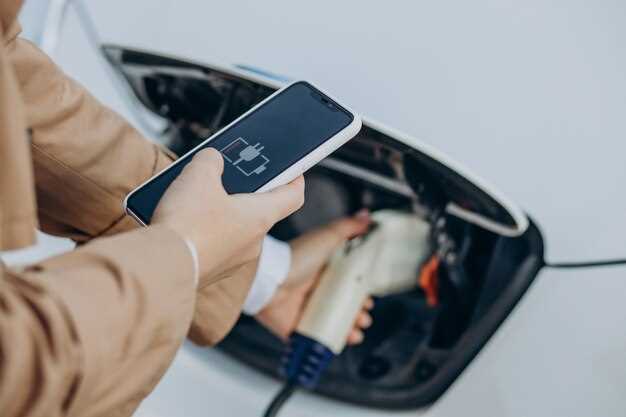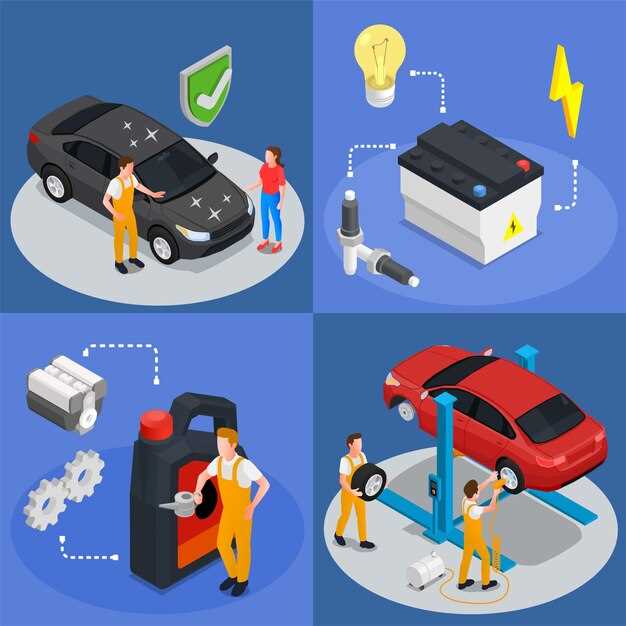
Replacing a car battery can seem daunting, but with the right approach and precautions, it can be a straightforward task. A well-functioning battery is essential for your vehicle’s performance, powering everything from the engine to the electronics. Understanding how to safely replace your car battery not only ensures your vehicle runs efficiently but also helps prevent potential hazards.
Before diving into the replacement process, it’s crucial to gather the necessary tools and materials. You will need a new battery that’s compatible with your vehicle, a set of wrenches, safety gloves, and eye protection. Taking time to prepare and ensuring you have the right equipment will make the process smoother and safer.
Moreover, following specific safety protocols can significantly reduce the risk of accidents. Batteries contain corrosive materials and can emit harmful gases, so it’s essential to work in a well-ventilated area and avoid sparks or flames nearby. By adhering to these guidelines and utilizing structured steps, you can confidently replace your car battery while safeguarding your health and your vehicle’s integrity.
Identifying Signs of a Failing Battery

Recognizing the signs of a failing battery is crucial to prevent unexpected breakdowns. Here are the key indicators to look for:
1. Slow Engine Crank: If the engine cranks slowly or struggles to start, it may be a sign that the battery is losing its charge or has internal damage. Listen for unusual sounds when starting your vehicle, as this can indicate insufficient power.
2. Electrical Issues: Frequent problems with your vehicle’s electrical systems, such as dimming headlights, flickering dashboard lights, or malfunctioning power windows, could signal a declining battery. These components draw from the battery’s power, and irregularities often point to battery failure.
3. Warning Light: Many modern vehicles are equipped with battery warning lights on the dashboard. If this light illuminates, it’s crucial to have the battery and charging system checked immediately, as it may indicate the battery needs replacement.
4. Age of the Battery: Most car batteries have a lifespan of three to five years. If your battery is approaching this age, consider having it tested regularly. Even without obvious signs, older batteries are more susceptible to failure.
5. Leaking Fluid: If you notice any fluid or corrosion around the battery terminals, this may indicate a leakage, which can affect the battery’s performance. Corrosion can cause poor electrical connections, making it vital to address the issue promptly.
6. Swelling or Bulging: Batteries that are swollen or bulging likely suffer from overcharging or internal damage. If you see this condition, it’s imperative to stop using the battery immediately and seek a replacement.
7. Extreme Weather Sensitivity: If your battery struggles to perform in extremely cold or hot weather, it may be nearing the end of its life. High temperatures can accelerate battery degradation, while cold weather can limit its ability to provide power.
By being aware of these signs, you can take proactive measures to address battery issues before they leave you stranded.
Choosing the Right Replacement Battery for Your Vehicle
Selecting the appropriate replacement battery for your vehicle involves several key considerations to ensure optimal performance and longevity. First, refer to your owner’s manual, which contains valuable information about the correct specifications for your car’s battery. This includes the group size, which indicates the physical dimensions and terminal configurations needed to fit your vehicle.
Next, pay attention to the Cold Cranking Amperage (CCA) rating. This figure measures the battery’s ability to start your engine in cold temperatures; a higher CCA is beneficial for colder climates. Additionally, consider the battery’s reserve capacity (RC), which indicates how long the battery can run on its own without the engine if the alternator fails.
Another critical factor is the battery technology. You typically have options such as lead-acid, absorbed glass mat (AGM), and lithium-ion batteries. Lead-acid batteries are the most common and cost-effective, while AGM batteries offer enhanced performance and longevity due to their durability and resistance to vibrations. Lithium-ion batteries, although pricier, provide lightweight solutions with efficient energy storage.
Furthermore, choose a reputable brand known for quality and reliability. Research customer reviews and ratings to gauge the performance of specific battery models. Don’t forget to check the warranty terms, as a longer warranty often indicates confidence in the battery’s lifespan.
Lastly, confirm that the battery is compatible with your vehicle’s electrical system, especially if you have any aftermarket modifications. Always consult with a professional if you’re unsure, as they can help you make an informed decision based on your vehicle’s needs.
Preparing Your Tools and Workspace for Battery Replacement
Before diving into the battery replacement process, it is essential to ensure that you have the right tools and a suitable workspace. This preparation helps to streamline the procedure and enhances safety. Follow these steps to set up effectively.
Gather the Necessary Tools:
- Safety Gear: Always wear safety goggles and gloves to protect your eyes and hands from any battery acid or debris.
- Wrench Set: A socket wrench or an adjustable wrench is essential for removing battery terminals.
- Battery Terminal Cleaner: This tool helps to clean corroded terminals, ensuring a good connection with the new battery.
- Multimeter: A multimeter can be useful for testing the voltage of the battery and electrical system before and after replacement.
- Battery Strap or Handle: This tool makes lifting and carrying the battery much easier and safer.
- Memory Saver: If your vehicle has electronic settings that may be lost during battery replacement, a memory saver will keep these in place.
Set Up Your Workspace:
- Choose a Flat, Stable Surface: Ensure that you work on a flat surface to avoid any accidental spills or falls when handling the battery.
- Ensure Adequate Lighting: A well-lit area will help you see any small components and ensure that you don’t miss any crucial steps.
- Clear the Area: Remove any unnecessary items from your workspace to minimize distractions and hazards.
- Ventilation: If you are working indoors, ensure that the area is well-ventilated to avoid exposure to any harmful fumes from the battery.
Organize Your Tools:
- Keep Tools Within Reach: Lay out your tools in an organized manner so that you can access them easily without having to move away from your workspace.
- Use Containers: Use small containers or trays to prevent losing screws, nuts, or small components during the replacement process.
By effectively preparing your tools and workspace, you enhance both safety and efficiency in replacing your car battery. Following these steps ensures a smooth transition and helps avoid potential issues during the process.
Step-by-Step Guide to Safely Disconnecting the Old Battery
Before beginning the disconnection process, ensure that the vehicle is turned off, and the keys are removed from the ignition. This prevents accidental electrical issues.
1. Gather necessary tools: You will need a wrench or socket set to remove the battery terminals, gloves to protect your hands, and safety goggles to shield your eyes from potential acid splashes.
2. Locate the battery: Open the hood and find the car battery. It is typically rectangular and located near the front of the engine compartment. Identify the positive (+) and negative (-) terminals.
3. Disconnect the negative terminal: Using the appropriate size wrench, loosen the nut on the negative terminal, marked with a ‘-‘ sign. Carefully remove the cable from the terminal and tuck it away so that it does not accidentally touch the battery.
4. Disconnect the positive terminal: Repeat the process for the positive terminal, marked with a ‘+’ sign. Loosen the nut, remove the cable, and ensure it is secured away from the battery to avoid contact.
5. Remove any loose components: If there are any brackets or hold-downs securing the battery, remove them using your tools. This may involve unscrewing bolts or unattaching clamps.
6. Lift out the battery: Batteries can be heavy. Use both hands to grip the sides and lift it straight out of the battery tray. Be careful not to tilt it excessively to avoid spilling any acid.
7. Check the battery tray: Inspect the tray for any corrosion or debris. Clean it if necessary, ensuring it is ready for the new battery installation.
Following these steps carefully will help ensure a safe and effective battery disconnection process, minimizing any risks involved.
Proper Installation Techniques for the New Battery
When installing a new car battery, it is crucial to follow proper techniques to ensure safety and optimal performance. Begin by positioning the new battery in the engine compartment, aligning it with the battery tray. Ensure that the battery terminals are oriented correctly, with the positive terminal on the left and the negative terminal on the right, in accordance with the vehicle’s configuration.
Before connecting, clean the battery terminals and cable connectors using a wire brush to remove any corrosion. This will provide a strong electrical connection and prevent potential issues. Start with the positive terminal, attaching the red cable first. Ensure the bolt is tight but avoid over-tightening, which could damage the terminal. Once the positive connection is secure, proceed to the negative terminal, connecting the black cable in the same manner.
After both cables are attached, double-check the connections to confirm they are secure. It is advisable to apply a thin layer of petroleum jelly or battery terminal protector spray on the terminals to inhibit corrosion. Ensure the battery is stable in its tray; if necessary, use the hold-down clamp or bracket to prevent movement while driving.
Finally, close the engine compartment and start the vehicle to ensure that the battery is functioning correctly. If any warning lights activate or the vehicle does not start, recheck the connections. Following these steps will ensure a safe and effective battery installation, prolonging the life of your new battery and enhancing vehicle performance.
Disposing of the Old Battery Responsibly
When replacing your car battery, it is crucial to dispose of the old battery in an environmentally responsible manner. Car batteries contain hazardous substances, including lead and sulfuric acid, which can be harmful to both the environment and human health if not handled properly.
Take it to a Recycling Center: The best option for disposal is to take the old battery to a recycling center. Many auto parts stores, repair shops, and recycling facilities accept used batteries. These locations follow safe disposal practices and often recycle the materials to create new batteries.
Return to Place of Purchase: Many retailers offer a battery recycling program. When you purchase a new battery, inquire if they will accept your old battery for proper recycling. This is often a straightforward way to ensure safe disposal.
Avoid Landfills: Never throw away your old battery in the regular trash or landfill. Lead-acid batteries can leak toxic substances into the ground, contaminating soil and water sources. This poses significant environmental risks and can lead to legal penalties.
Check Local Regulations: Before disposing of a battery, check local regulations regarding hazardous waste. Some areas have specific guidelines and collection events for disposing of batteries, and following these regulations is essential for responsible disposal.
Educate Others: Sharing information about proper battery disposal can contribute to safer communities and a cleaner environment. Encourage friends and family to recycle their batteries as well, helping to raise awareness and promote responsible practices.
